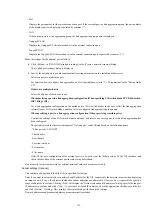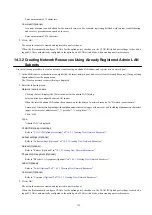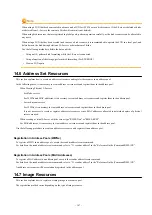
Note
When using a LUN that has been created in advance and a LUN for iSCSI boot as a disk resource, if the L-Server is deleted or disks
are deleted from L-Servers, the content of disks will remain (is not deleted).
When using disk resources that are registered in global pools, perform operation carefully, as the disk resources can be allocated to
any users.
When using a LUN that has been created in advance as a disk resource, it is recommended to operate the LUN in a local pool, and
delete data on the disk during deletion of L-Servers or detachment of disks.
Use the following methods to delete the data on disks.
-
Using an OS, perform disk formatting while the L-Server is connected
-
Using a function of the storage, perform disk formatting (For ETERNUS)
-
Create a LUN again
14.6 Address Set Resources
This section explains how to create an address set resource and register the resource in an address pool.
In the following cases, it is necessary to create address set resources and register them in the address pool:
-
When Creating Physical L-Servers
-
For blade servers
For WWNs and MAC addresses, it is necessary to create address set resources and register them in the address pool.
-
For rack mount servers
For WWNs, it is necessary to create address set resources and register them in the address pool.
It is not necessary to create or register address set resources, since MAC addresses allocated to network adapters of physical
servers are used.
-
When creating a virtual L-Server with the server type "RHEL-Xen" or "RHEL-KVM"
For MAC addresses, it is necessary to create address set resources and register them in the address pool.
Use the following procedure to create an address set resource and register it in an address pool:
Registration in Address Pools (WWNs)
To register a WWN in an address pool, execute the rcxadm addrset create command.
For details on the rcxadm addrset create command, refer to "3.1 rcxadm addrset" in the "Reference Guide (Command/XML) CE".
Registration in Address Pools (MAC Addresses)
To register a MAC address in an address pool, execute the rcxadm addrset create command.
For details on the rcxadm addrset create command, refer to "3.1 rcxadm addrset" in the "Reference Guide (Command/XML) CE".
An address set resource will be created and registered in the address pool.
14.7 Image Resources
This section explains how to register a cloning image to a resource pool.
The registration method varies depending on the type of image resource.
- 147 -
















































